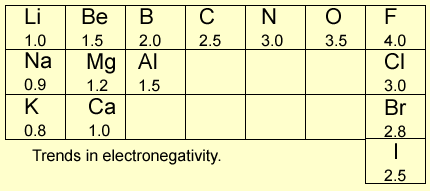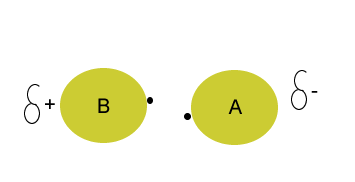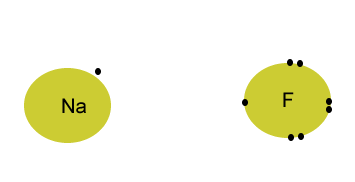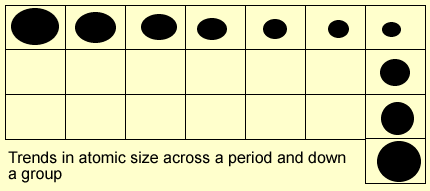

When non-metal atoms with slight variation in electronegativity bond, electrons are shared unevenly. This causes small charges to appear on opposite sides of the bond.
Which atom on the right has the greatest electronegativity?


Electronegativity is the ability to attract electrons to an atom. This attraction is electrostatic in nature. It is the attraction between the nucleus (positive) and the valence electrons that is crucial in determining the electronegativity of the atom. Electrostatic forces depend on the size of the charges and the distance between them.
Look at the trend in atomic size across a period and down a group. Offer an explanation as to why electronegativity increases across a period but decreases down a group.
